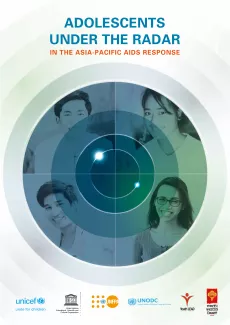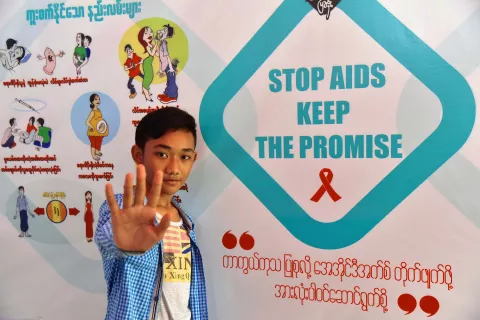ADOLESCENTS UNDER THE RADAR IN THE ASIA-PACIFIC AIDS RESPONSE
Adolescents neglected in the HIV response
- Available in:
- 中文
- English
Highlights
Adolescence is a time of wondrous transformation. It is also a time of experimentation with sex and drugs, with potentially grave consequences for the spread of HIV. In Asia and the Pacific, one in seven new infections in 2014 occurred in 15-19 year olds. The region in 2014 accounted for almost one quarter of global new HIV infections among adolescents (aged 10-19). Even as impressive inroads are made against entrenched epidemics in the region, many countries, including Thailand, Indonesia, Pakistan and the Philippines, are witnessing growing HIV infection rates among the most vulnerable adolescent populations.
Adolescents neglected in the HIV response
The number of adolescents aged 10-19 officially estimated to be living with HIV in Asia and the Pacific has trended upwards over the past decade, reaching 220,000 in 2014.2 This trend is likely to persist unless budgets and priorities quickly adapt to reflect realities. Individuals in the second decade of life are more vulnerable to acquiring HIV than adults and harder to care for once transmission has occurred for many reasons – biological, social, psychological and legal.3 Yet they are a much less powerful constituency, with often a poor visibility and a weak voice. To date they have been a neglected component
of national HIV testing, treatment, care and support strategies. This inequity needs to be redressed – urgently.




